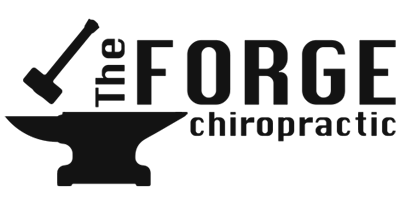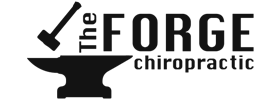Understanding Headaches: Solutions for Neck-Related, Migraine, and Tension Headaches in Baldwin WI

Headaches are incredibly common and can significantly impact your daily life. If you're struggling with them, please know you're not alone. At our chiropractic clinic in Baldwin WI, we understand that different types of headaches have different causes and require distinct approaches. This page explores three common types we frequently help
patients manage: Cervicogenic Headaches (originating from the neck), Migraine Headaches, and Tension-Type Headaches. An accurate diagnosis is always the rest step towards effective relief.
- Cervicogenic Headaches: When Your Neck is the Source of Pain
A surprising number of headaches—estimated at 15-25%—actually stem from issues within your cervical spine (your neck). These are known as Cervicogenic Headaches (CGH).- What is a Cervicogenic Headache? This headache is referred pain, meaning the pain is felt in the head, but the source is a disorder or dysfunction in the neck's joints, muscles, or nerves.
- Key Facts: CGH typically affects adults, often in their 40s, and is more common in women.
- Understanding the Cause: Current understanding suggests that CGH arises from a "convergence" of nerve pathways in the upper spinal cord where sensory nerves from your upper neck meet the trigeminal nerve (which supplies sensation to your face and head). This allows pain from neck structures to be perceived as head pain. Direct irritation of nerves at the base of the skull and tension from muscular connections to the dura (the protective covering of the brain and spinal cord) can also contribute.
- Common Associations: CGH can be as debilitating as other headache types and is often linked to a history of trauma, like whiplash or concussion. Reduced neck function is also a common finding.
- Migraine Headaches: More Than Just a Bad Headache
Migraine is a complex neurological disorder known for recurrent, often severe headaches, frequently accompanied by other distinct symptoms.- What is a Migraine? Migraines are typically one-sided, throbbing headaches. They may occur "without aura" (more common) or "with aura." An "aura" involves temporary neurological symptoms like visual disturbances, tingling, nausea, or heightened sensitivity to light and sound before or during the headache.
- Understanding Migraines: Migraines are now seen as complex neurological events, with evidence suggesting a genetic predisposition leading to a "hyperexcitable" brain.
- Key Facts: About 14% of people experience migraines in their lifetime. They aect roughly 18-21% of females and 6-10% of males and are a leading cause of severe headaches and work-related disability. Before puberty, migraines are more common in boys, but this ips, making adult females about three times more likely to experience them. Prevalence oen peaks in the third decade of life.
- Risk Factors: A strong genetic link is prominent. Other factors include being overweight, medication overuse (especially for pain relief, which can make migraines chronic), and certain nutritional deficiencies like low vitamin D.
- Common Migraine Triggers: A wide array of factors can trigger migraines in susceptible individuals. These include stress, strong odors, bright or flickering lights, changes in sleep, weather shifts, dehydration, hormonal changes, and even neck tension or an underlying cervicogenic headache. Certain foods and medications can also be triggers for some.
- Tension-Type Headaches: The Most Common Culprit
Tension-type headaches (TTH) are the most frequently experienced type of headache.- What is a Tension-Type Headache? TTH usually causes mild to moderate pain, often described as a constant, dull ache or pressure, like a tight band around the head. The pain is typically felt on both sides.
- Symptoms: Unlike migraines, TTH isn't usually accompanied by nausea or visual disturbances and isn't typically worsened by routine physical activity.
- What Contributes to TTH? TTH is often linked to muscle tension in the neck, shoulders, scalp, and jaw. Common triggers include stress, anxiety, fatigue, poor posture (especially during prolonged computer use or desk work), and jaw clenching. TTH can be episodic or become chronic.
The Forge Chiropractic Approach to Headache Management in Baldwin WI
At The Forge Chiropractic, we understand that effective headache relief starts with identifying the specific type of headache you're experiencing and its underlying causes or contributing factors. Our approach is thorough and patient-centered:
- Detailed Headache History: We'll take the time to listen and learn about your headaches: the character of the pain, location, frequency, duration, any associated symptoms, potential triggers, family history, and what treatments you've tried.
- Comprehensive Physical Examination: This typically includes:
- Cervical Spine Assessment: We'll carefully evaluate your neck's range of motion, joint mobility, and muscle tone, looking for areas of restriction, tenderness, or trigger points that could be contributing to your headaches. This is particularly important for Cervicogenic and Tension-Type Headaches, and for identifying musculoskeletal triggers for Migraines.
- Neurological Screening: To rule out other potential causes and assess nerve function.
- We may utilize Jtech functional assessment tools if indicated, to get objective data on cervical spine movement or muscle function that could be contributing to your headaches.
- Whole-Person Healthcare: We look at you as a whole person, considering how lifestyle factors such as stress, ergonomics (your workspace setup), sleep habits, hydration, and nutrition might be playing a role in your headache paerns.
- Tailored Treatment Strategies: Based on our findings, we'll develop a
personalized management plan:- For Cervicogenic Headaches: Treatment oen involves gentle chiropractic adjustments to restore proper joint mechanics in the neck, so tissue therapies (like massage or myofascial release) to address muscle tension, and specic exercises to improve neck strength, exibility, and posture.
- For Tension-Type Headaches: Similar to CGH, care focuses on relieving muscle tension in the neck, shoulders, and upper back through chiropractic adjustments, so tissue work, and corrective exercises. We also provide advice on stress management techniques and ergonomic modifications.
- For Migraines: While chiropractic care is not a direct "cure" for the neurological condition of migraine, it can be a valuable part of a comprehensive management strategy. By addressing musculoskeletal triggers, such as neck tension and dysfunction, chiropractic care may help reduce the frequency, intensity, or duration of migraine attacks for some individuals. We also provide guidance on identifying and managing personal triggers, and can work alongside your medical doctor if co-management is appropriate.
Our goal at The Forge Chiropractic is to not only help relieve your current headache pain but also to empower you with a better understanding of your specific headache
type and the factors that contribute to it. We're committed to providing expert clinical care and support to our Baldwin, Wisconsin community, helping you nd lasting solutions.
OFFICE HOURS
Monday
12:00pm - 6:00pm
Tuesday
8:00am - 12:00pm
2:00pm - 6:00pm
Wednesday
8:00am - 12:00pm
2:00pm - 6:00pm
Thursday
8:00am - 12:00pm
2:00pm - 6:00pm
Friday
8:00am - 12:00pm
Saturday & Sunday
Closed
The Forge Chiropractic
900 Main St
Baldwin, WI 54002



